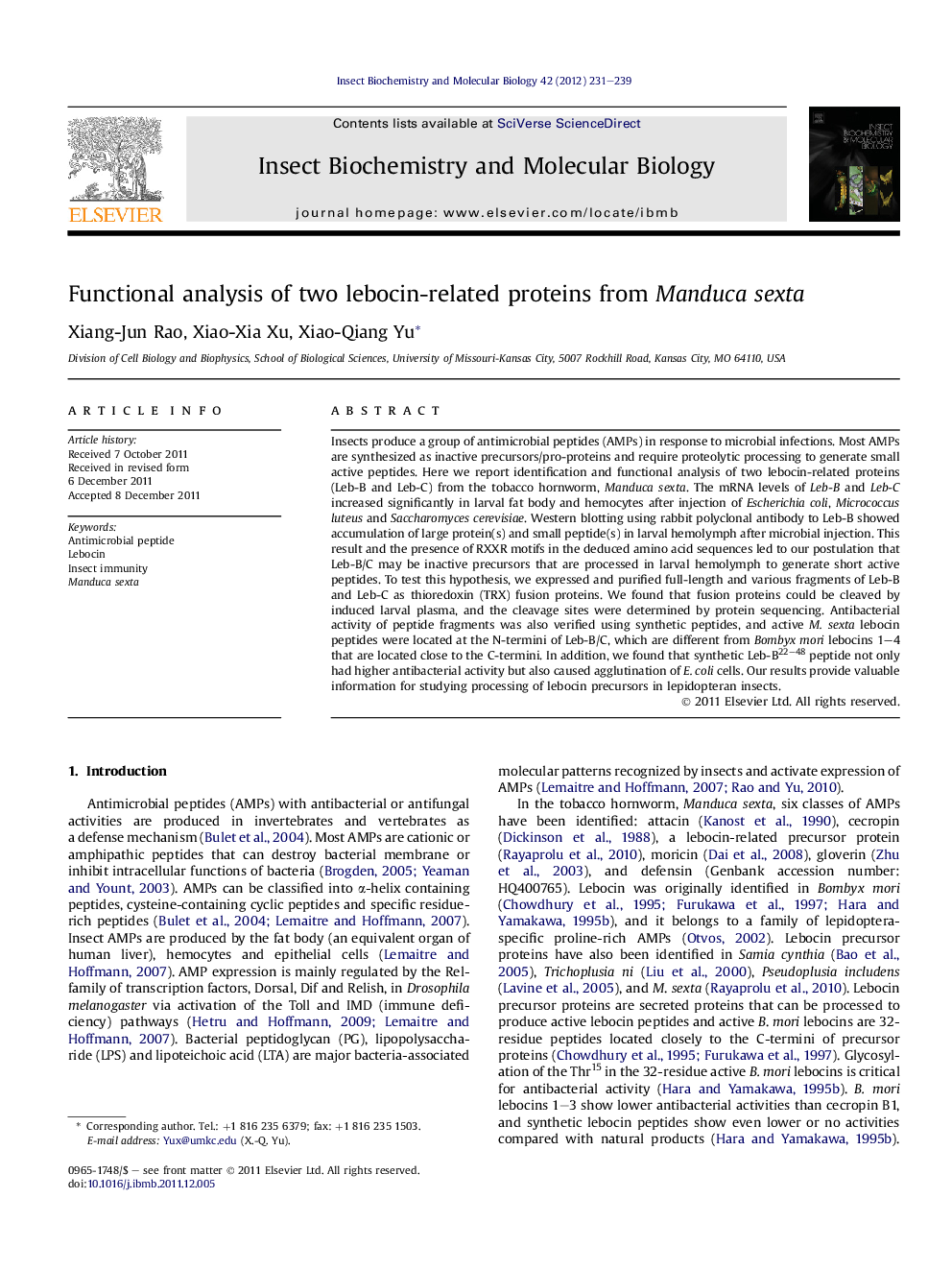| Article ID | Journal | Published Year | Pages | File Type |
|---|---|---|---|---|
| 1982247 | Insect Biochemistry and Molecular Biology | 2012 | 9 Pages |
Insects produce a group of antimicrobial peptides (AMPs) in response to microbial infections. Most AMPs are synthesized as inactive precursors/pro-proteins and require proteolytic processing to generate small active peptides. Here we report identification and functional analysis of two lebocin-related proteins (Leb-B and Leb-C) from the tobacco hornworm, Manduca sexta. The mRNA levels of Leb-B and Leb-C increased significantly in larval fat body and hemocytes after injection of Escherichia coli, Micrococcus luteus and Saccharomyces cerevisiae. Western blotting using rabbit polyclonal antibody to Leb-B showed accumulation of large protein(s) and small peptide(s) in larval hemolymph after microbial injection. This result and the presence of RXXR motifs in the deduced amino acid sequences led to our postulation that Leb-B/C may be inactive precursors that are processed in larval hemolymph to generate short active peptides. To test this hypothesis, we expressed and purified full-length and various fragments of Leb-B and Leb-C as thioredoxin (TRX) fusion proteins. We found that fusion proteins could be cleaved by induced larval plasma, and the cleavage sites were determined by protein sequencing. Antibacterial activity of peptide fragments was also verified using synthetic peptides, and active M. sexta lebocin peptides were located at the N-termini of Leb-B/C, which are different from Bombyx mori lebocins 1–4 that are located close to the C-termini. In addition, we found that synthetic Leb-B22–48 peptide not only had higher antibacterial activity but also caused agglutination of E. coli cells. Our results provide valuable information for studying processing of lebocin precursors in lepidopteran insects.
Graphical abstractFigure optionsDownload full-size imageDownload high-quality image (152 K)Download as PowerPoint slideHighlights► Two lebocin-related proteins (Leb-B and Leb-C) are identified in Manduca sexta and both are immune inducible. ► Leb-B and Leb-C are precursors that could be cleaved at the RxxR motifs and the cleavage sites are determined. ► Active lebocin peptides (Leb-B22–48 and Leb-C21–48) are located at the N-termini of precursors. ► Synthetic Leb-B22–48 and Leb-C21–48 can inhibit the growth of some pathogenic bacteria and fungi. ► Leb-B22–48, but not Leb-C21–48, can cause agglutination of E. coli cells.
